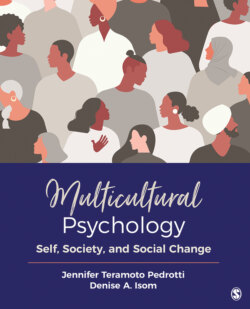Читать книгу Multicultural Psychology - Jennifer T. Pedrotti - Страница 15
На сайте Литреса книга снята с продажи.
Is Science Always Objective? Research Issues Through a Multicultural Lens Stereotyping and Science
ОглавлениеEven scientific experiments took on the stereotypes fueled by social Darwinism and polygenism by attempting to confirm the inferiority of certain races with physical data about brain size and weight. Today, we are aware that the size of one’s brain is not the sole determinant of one’s intelligence, but in the early 1900s, a physician named Robert Bennett Bean conducted studies in which he measured the brains of deceased African American and White American individuals. As a part of these experiments, Bean made claims that the African American brain was on average much smaller than White brains and thus showed intellectual deficiencies in this race (Gould, 1996; see Figure 1.1). Interestingly, Bean’s mentor from Johns Hopkins, Franklin P. Mall, suspected that Bean’s data too cleanly found “evidence” for his hypothesis, and so Mall remeasured the brains in Bean’s experiment with one important difference: He made sure that while measuring these brains, he masked the race of the individual from which it came, making him unaware of the racial origin of the brain he was measuring. Mall’s conclusions were entirely different from Bean’s: There were no significant differences in average size of the African American brain versus the White brain (see Figure 1.2). Despite this counterevidence, Bean’s conclusions were more widely distributed, perhaps because they confirmed the stereotype of superiority of White individuals that was prevalent at the time. Thus, Mall’s findings were often dismissed, while Bean’s (though incorrect) were spread.
Description
Figure 1.1 Bean’s “data” was collected with the knowledge of whether the brain being studied was from a Black person or a White person and shows distinct differences between Black and White brains.
Source: Gould, S. J. (1996). The mismeasure of man: The definitive refutation to the argument of The Bell Curve. New York: Norton (figure is on p. 110).
Race and country of origin are not the only cultural facets that have influenced historically held ideas of what is healthy or positive. Adherence to the Christian religion, as the main faith of White Europeans who began to travel to the New World, influenced what was abnormal and what was not. In the United States, American Indians experienced the impact of this influence when White settlers denounced their religion as dangerous and savage, leading to the ultimate outlawing of American Indian religious practices in the late 1800s. To give a more current example within the field of psychology, same-sex orientation in individuals was given a psychological diagnosis as the pathological condition homosexuality. This diagnosis remained in the Diagnostic and Statistical Manual of Mental Disorders, from which psychologists determine diagnoses for clients, until the third edition was published in 1987 (American Psychological Association [APA], 1987).
In many of the above examples of pathologicalization, extensive research was conducted and touted as the basis for “inferiority” of particular groups based on cultural differences. For context, in traditional experimental research, differences are often studied by manipulating different variables to see how these changes impact other variables. You may remember the terms independent variable (the variable that is manipulated) and dependent variable (the outcome variable) from your statistics or research methods classes. Consider, for example, a study that seeks to determine whether a particular drug has an effect on the health of the sample of participants. Groups are set up such that one group gets the treatment drug being tested, and the other does not. The independent variable in this case is presence or absence of the drug, and the dependent variable is a measure of the participants’ health. In traditional experiments such as the one in this example, the independent variable is easy to manipulate. The research can randomly assign individual participants to group one (treatment group) or group two (control group) and administer the drug accordingly.
Description
Figure 1.2 Mall’s data was collected without knowledge of whether the brain was from a Black person or a White person and shows no distinct difference between the brains.
Source: Gould, S. J. (1996). The mismeasure of man: The definitive refutation to the argument of The Bell Curve. New York: Norton (figure is on p. 113).
Research in the social sciences, particularly when we start to study social facets like race or gender, does not have the same straightforwardness. Specifically, one cannot “assign” race to someone, and so if we are curious about differences between racial groups, we must take groups that have already been formed organically. This lack of random assignment makes more room for bias to occur (“Awareness of,” 2017).
Science is rather famously thought to be an objective field, when certain tenets are adhered to. Yet as noted previously, it is important to acknowledge that putting the tenets of science into practice cannot be carried out without a human idea and by a human hand in some shape or form. Humans, who are by nature often neither objective nor impartial, are the ones creating the hypotheses, designing the research studies, and choosing the measurements.
